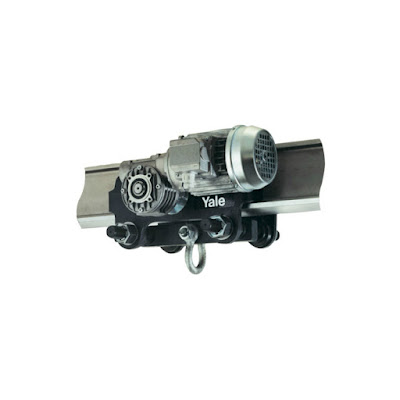The hoist buying guide- Things you need to be careful about
A hoist can be manual, electric, pneumatic or hydraulic. With the manual type, the hoist is made from chains and includes a lever. It allows to efficiently lift and lower loads with precise accuracy. In this blog, we are going to discuss about the pre-requisites to buy the manual and electric variants.
When it comes to hoists, manual lever hoists are the most traditional ones. They have been in use for decades and are still the cheapest option to lift loads.Lever hoists are very simple devices considering the huge amount of loads such an equipment can lift. Chain hoists are manufactured from durable, high-grade steel to ensure reliability and safety while lifting several tons of heavy loads.
An electric hoist is a hoisting device similar to manual hoists in terms of functioning. that is mounted overhead to a gantry or beam. It can be affixed in one location or utilize a trolley to slide along a beam or rail. The winch consists of an electric motor affixed to a gear mechanism that spins a drum. Around the drum is a wire cable with a hook attached to the free end. Generally, an electric remote control allows the operator to raise and lower the load hook by pressing a button.
Both the manual and electric hoists are differentiated by load capacity(1 ton, 2 ton, 5 ton, 10 ton electric chain hoists, etc), voltage requirements, lifting speed, cable length.
Whenever you are purchasing a hoist(be it manual or electric), you need to consider a few common points:
Capacity
One of the things to consider while choosing an electric hoist is the estimated amount of weight that it will lift. Ensure to choose the right hoist for the task. It is advisable to select a hoist that provides more capacity than what is needed by the job. You should anticipate and try the weights of various objects you will want to lift and plan accordingly.
Height at which the load needs to be lifted
The height at which the objects are being lifted determines the amount of chain needed. Most hoists have a typical configuration of 10 feet. However, you can easily modify it with a 90 feet of chain or even more to satisfy your operational requirements. You should be aware that the longer the chain is needed, the costlier the hoist is.
Frequency of lifts you expect from the electric chain hoist
The total number of lifts that the electric chain hoist is going to execute per day should be taken into consideration. Heavy-duty electric chain hoists are manufactured for more intense performance. For example, CM Lodestar provides excellent heavy-duty loads. Light-duty hoists can handle lower frequency of lifts.
Selecting the perfect power specification for the electric chain hoist: Electric chain hoist 110v/ Electric chain hoist 240v
It is often confusing to choose between the same product available in different power specifications. Let’s make it simple. How much is 240 divided by 110? The answer is 2 roughly which means that it will take twice as long to lift the same weight for the 110-volt version as compared to a 220-volt variant. In easy terms, if faster operations is your motive, you must opt for the 220-volt electric chain hoist.
The needs of the future
Foreseeing the alterations in the product line or processes that will require greater capacity in the next few years will save you the added expense of replacing a hoist.
The types of material and products that the electric chain hoist will lift
Lifting and lowering of sophisticated items require smooth controls and it should be verified before investing in the electric chain hoist. Check out the ratchet straps if you have to lift delicate loads.
End Note:
There are hoists, hydraulic pumps, car winches for sale in the UK with many suppliers. However, you should select a supplier carefully before sourcing any type of lifting devices for your operation. If it comes to hoists, you should also duly consider the above mentioned points before choosing a hoist.



Comments
Post a Comment